Allison Collection Photos
August, 1940

Britain’s Home Guard Studies Guerrilla Warfare, 8/7/1940 Middlesex, England—Members of Britain’s ever-increasing Home Guard who desire to have instruction in guerilla warfare tactics are attending a privately run school at Osterley Park. The courses are designed to show how to improvise to meet new situations and to use guile in overcoming the enemy. All instructors are experienced veterans. Here, some of the students take notes during an open air lecture. Credit: ACME;
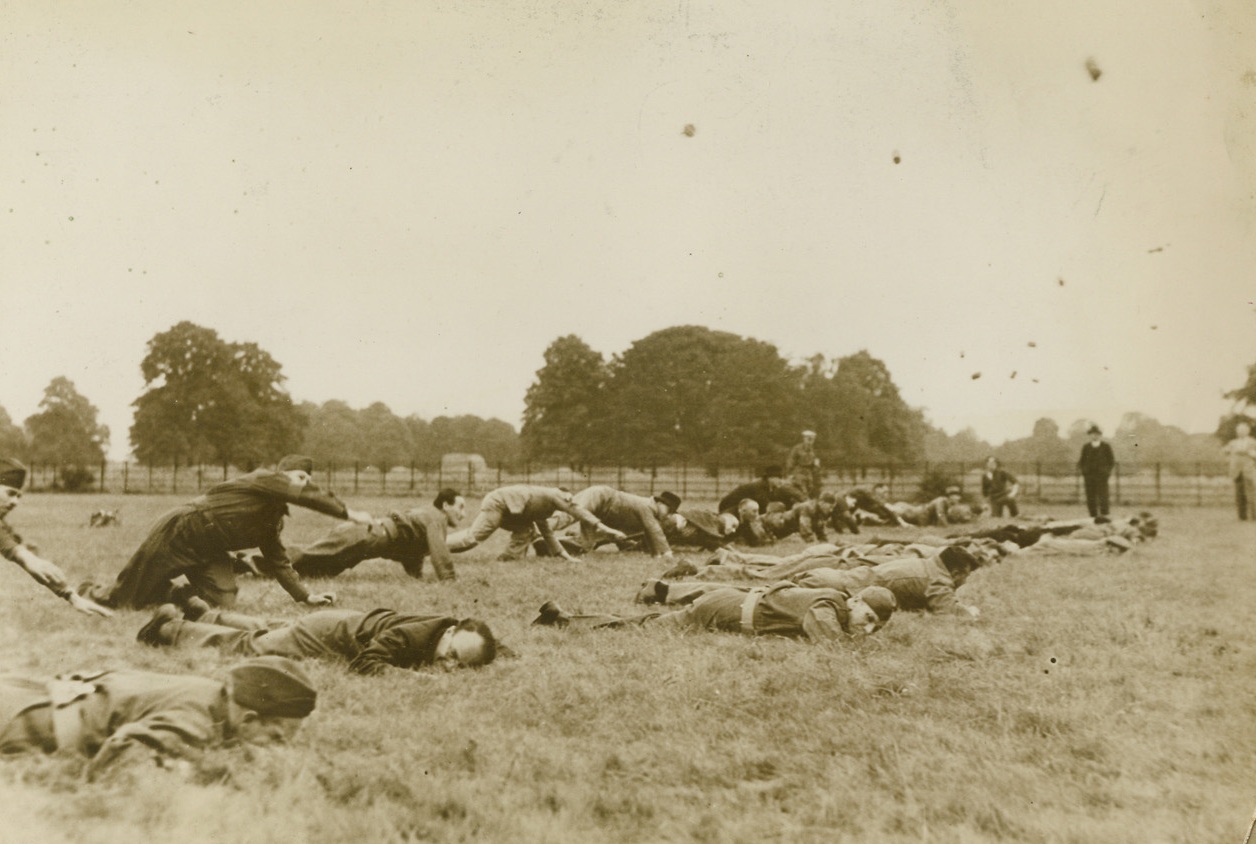
Britain’s Home Guard Studies Guerrilla Warfare, 8/7/1940 Middlesex, England - Members of Britain’s ever-increasing Home Guard who desire instruction in guerrilla warfare tactics are attending a privately run school at Osterley Park. The courses are designed to show how to meet new situations and how to use guile in overcoming the enemy. All instructors are experienced veterans. Here, Home Guards, some of them still in civilian clothing, practice hand grenade throwing from prone positions. The air is filled with missiles used in practice. Credit: ACME;
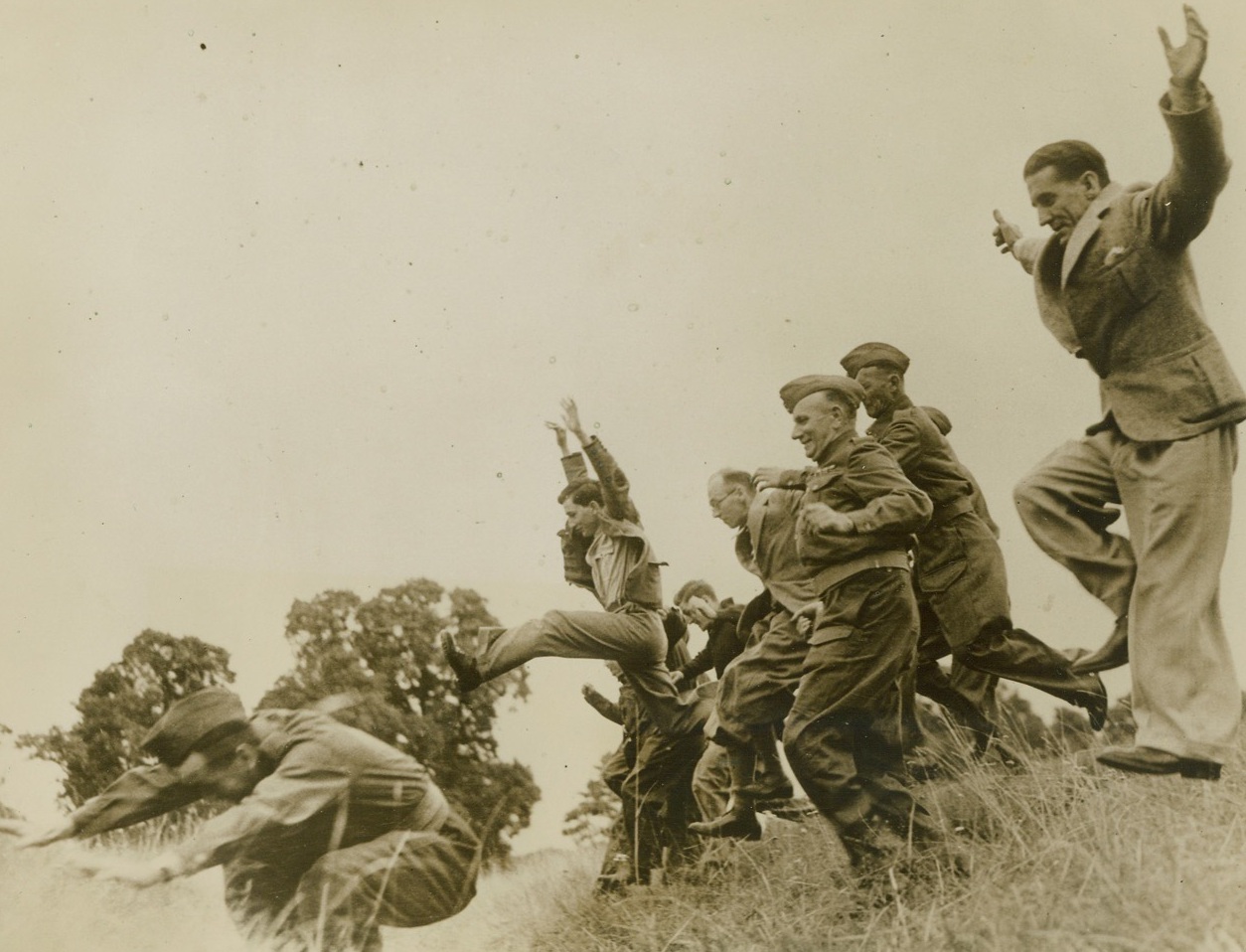
BRITAIN’S HOME GUARD STUDIES GUERRILLA WARFARE, 8/7/1940 MIDDLESEX, ENGLAND –Members of Britain’s home guard who desire instruction in Guerilla warfare tactics are taking courses at a privately run school at Osterly Park. The courses are designed to show students how to use guile in overcoming the enemy. All the instructors are experienced veterans. Here a group of the students jump a ditch during training. Credit: Acme;
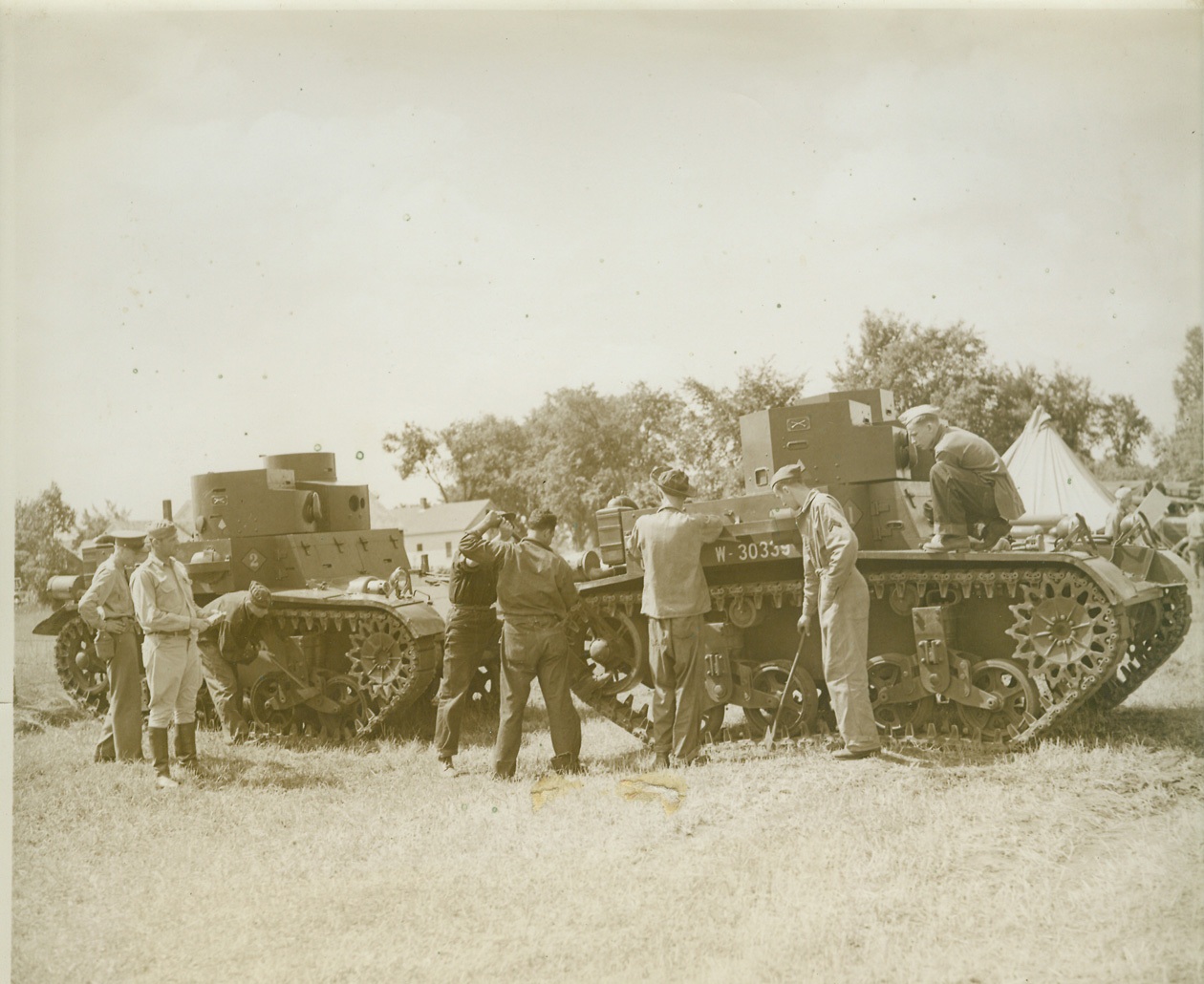
War games tanks, 8/8/1940 Handwritten Caption, Illegible
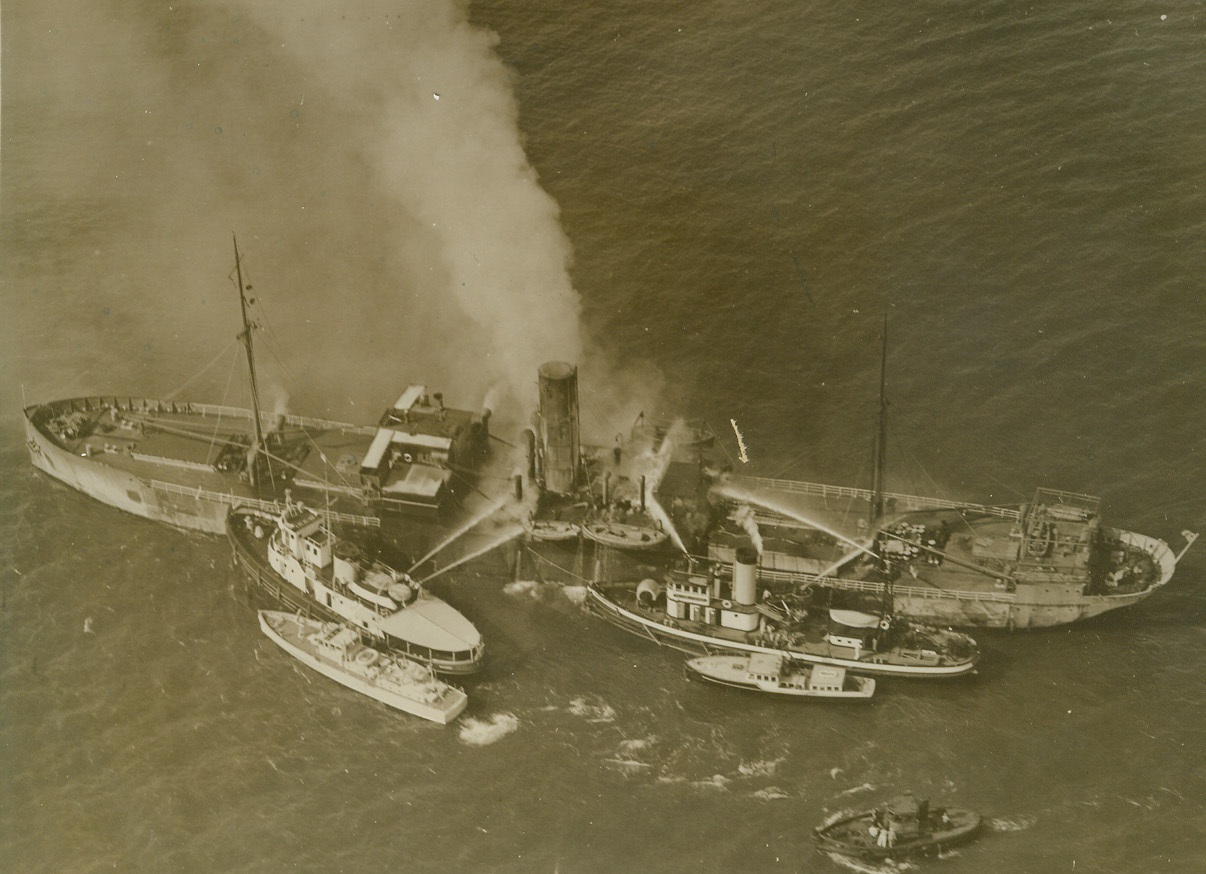
NORWEGIAN FREIGHTER BOUND FOR ENGLAND BURNS, 8/81940 NEW YORK CITY—Fireboat and Coast Guard vessels fighting fire aboard the Norwegian freighter Lista, 3,671 tons, as it turned about in outer New York Harbor and headed back to port. The ship later went aground in flames and was abandoned by its crew of 28. The ship carrying a heavy cargo for Britain, went aground near West Bank Light, with the fire out of control. Credit: Acme;
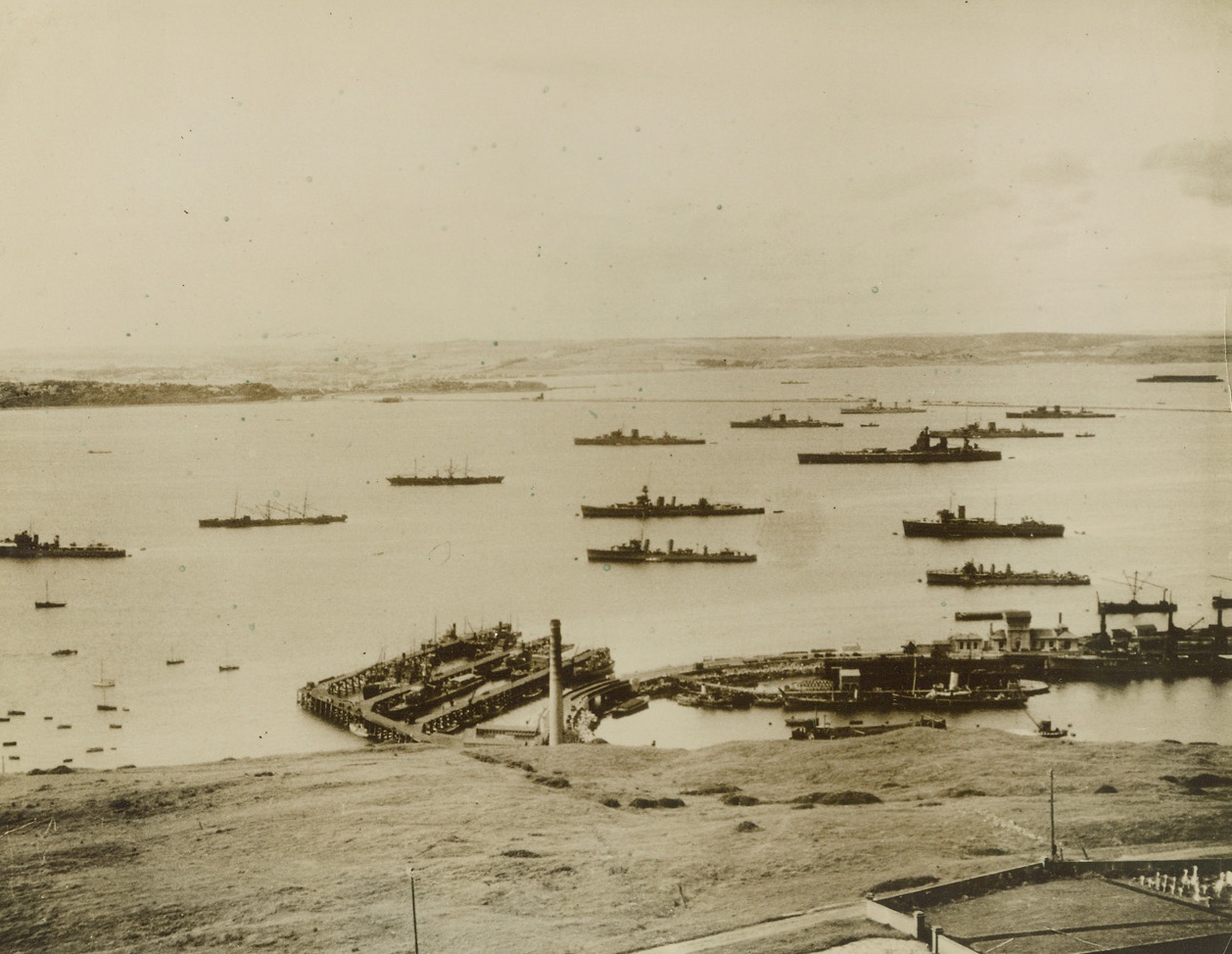
Target of Nazi Aerial Blitzkrieg, 8/11/1940 Portland, England – View of the harbor of Portland, England, showing warships anchored in naval drydock (foreground). Portland was the objective of fiercest aerial bombardment of the war on August 11, when wave after wave of Nazi bombers, accompanied by fleets of fighting planes, rained their deadly loads on the harbor works and anchored ships, doing tremendous damage, according to Berlin statement. The attack on Portland was part of the aerial blitzkrieg against other British ports.;

Germans Bomb Croydon, Hub of Britain’s Airlines, 8/15/1940 German dive bombers penetrated to the outskirts of London to attack the great commercial airport at Croydon, above, as they intensified their air blitzkrieg. British claim to have driven off the Stukas in a dog fight over the field which is now the base for R.A.F. activities Credit (ACME);
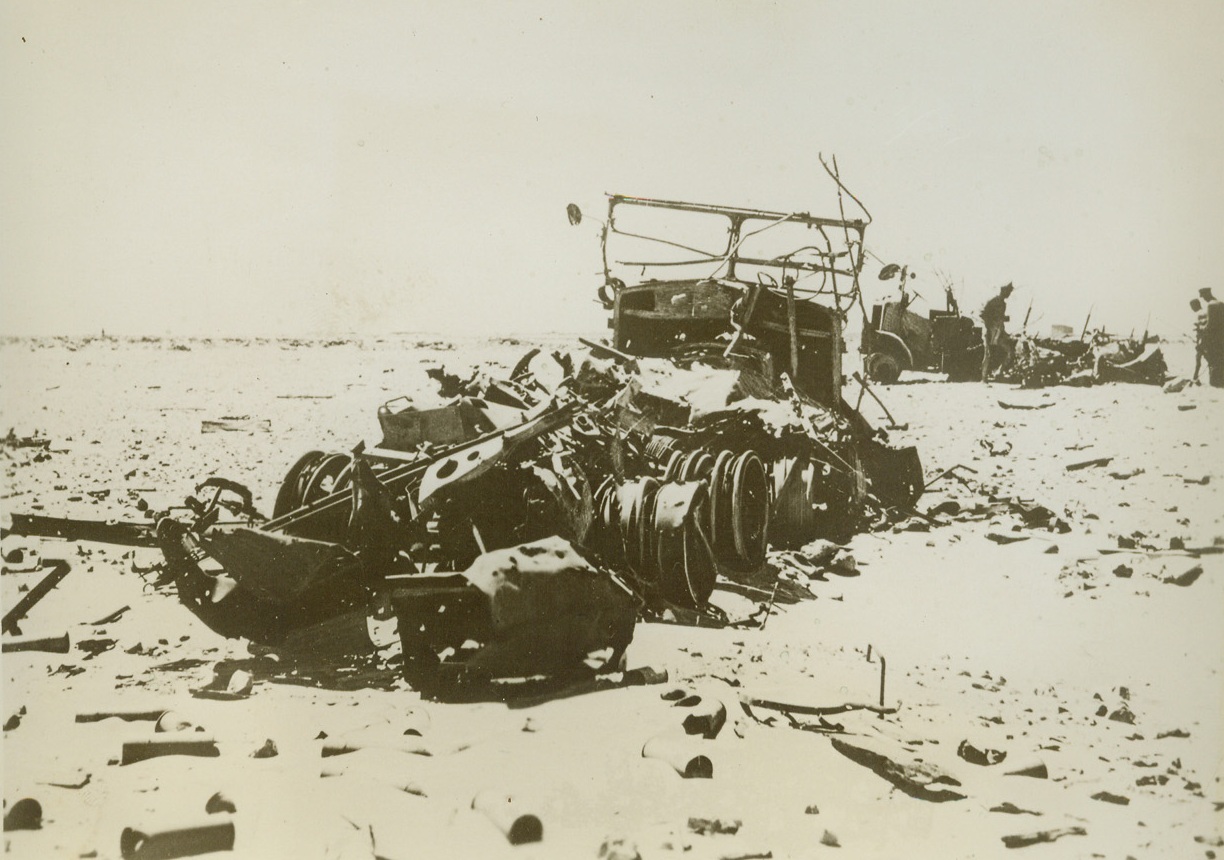
British Column Wrecked by Italians, 8/18/1940 British Somaliland—The caption for this picture, passed by German censor, said: “A column of enemy trucks that were making an advance on Italian territory in Africa. They were demolished by the marksmanship of the Italian air arm.” Credit: ACME.;
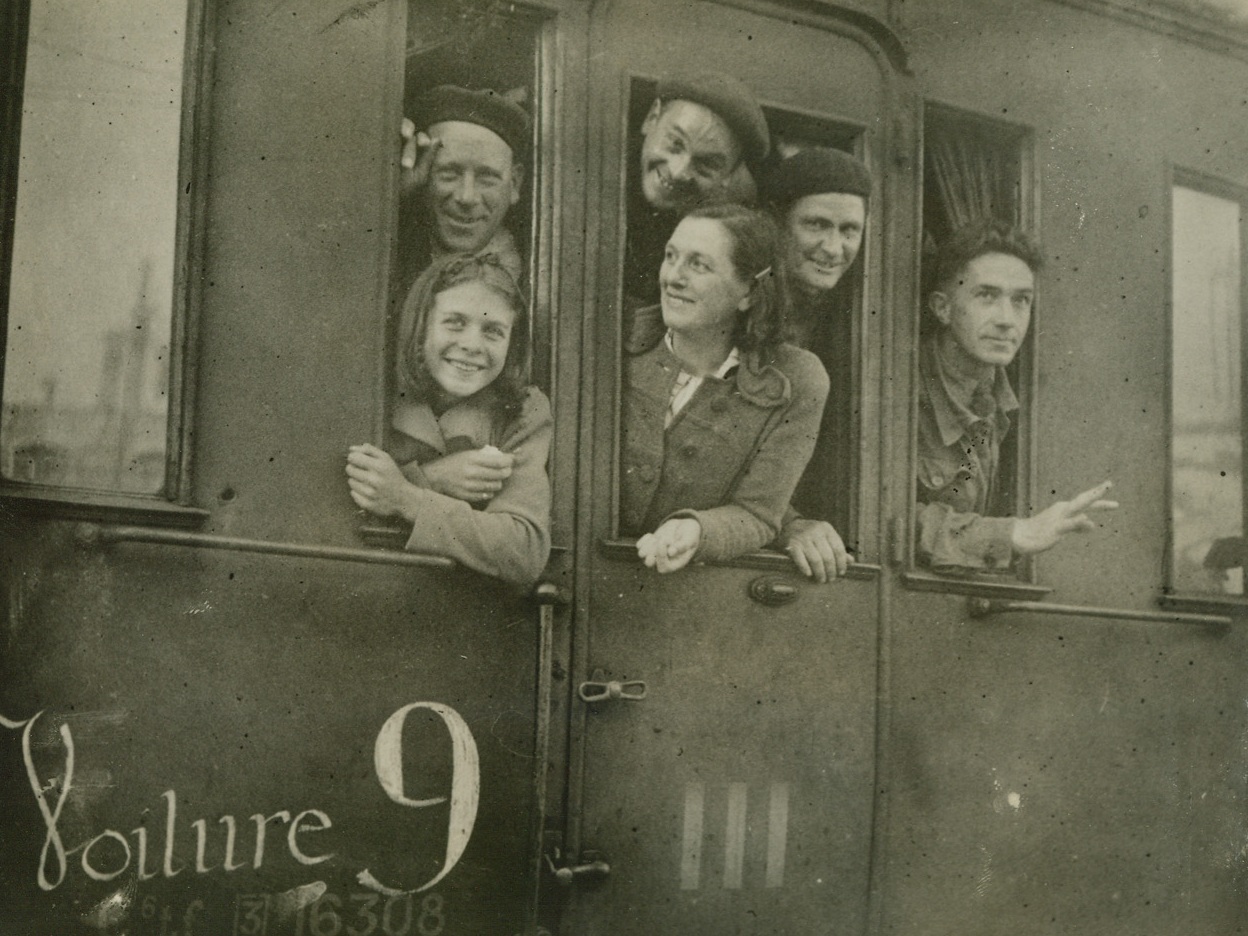
FRENCH COMMUNICATIONS EMPLOYEES RETURN HOME, 8/18/1940 CLERMONT – FERRAND, FRANCE – Any employees of the P.T.T. (post, telephone and telegraph) who were here have been sent back to their posts by the administration. P.T.T. employees wait at the window of their compartment for the train taking them to the capital to leave.;
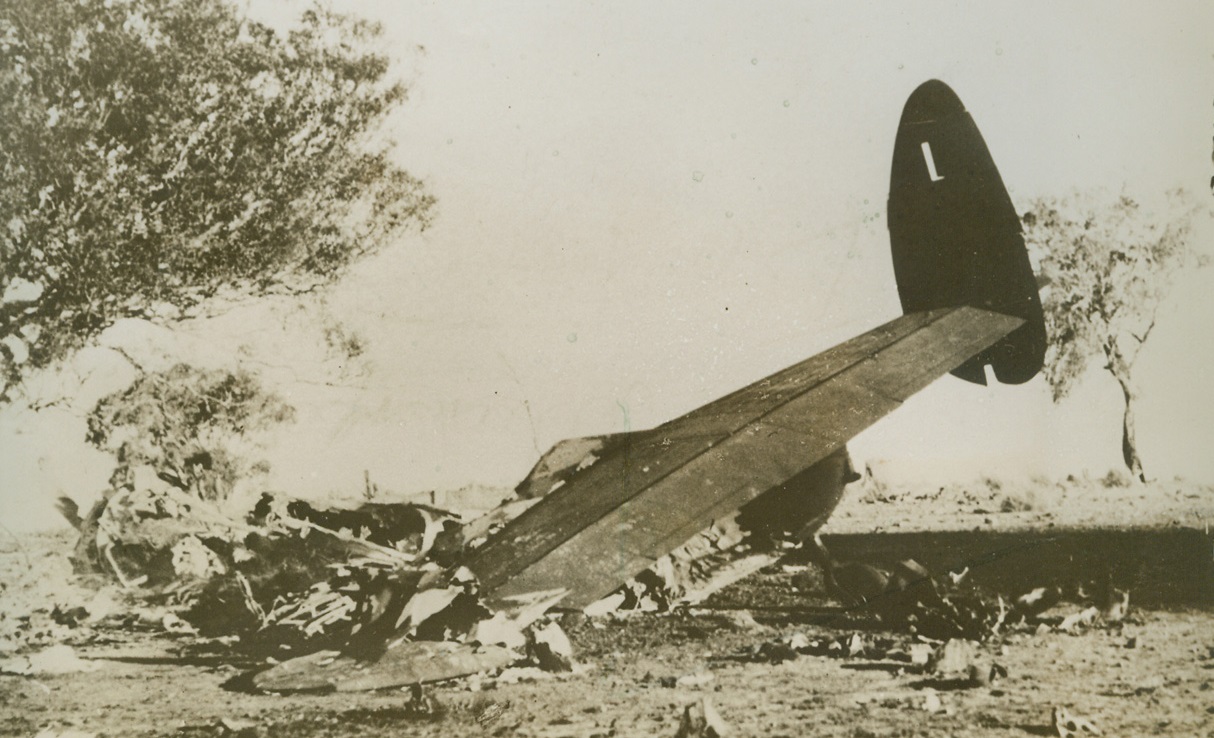
Plane Crash Kills Three Australian Ministers, 8/24/1940 Canberra, Australia - - Wreckage of a transport plane that crashed near Canberra, Australia, Aug. 14, killing all ten occupants – three federal ministers, two high Army officers and five others. (photo flown across the Pacific on the new Pan American airways San Francisco-Auckland, New Zealand, Clipper route) Credit line (ACME);
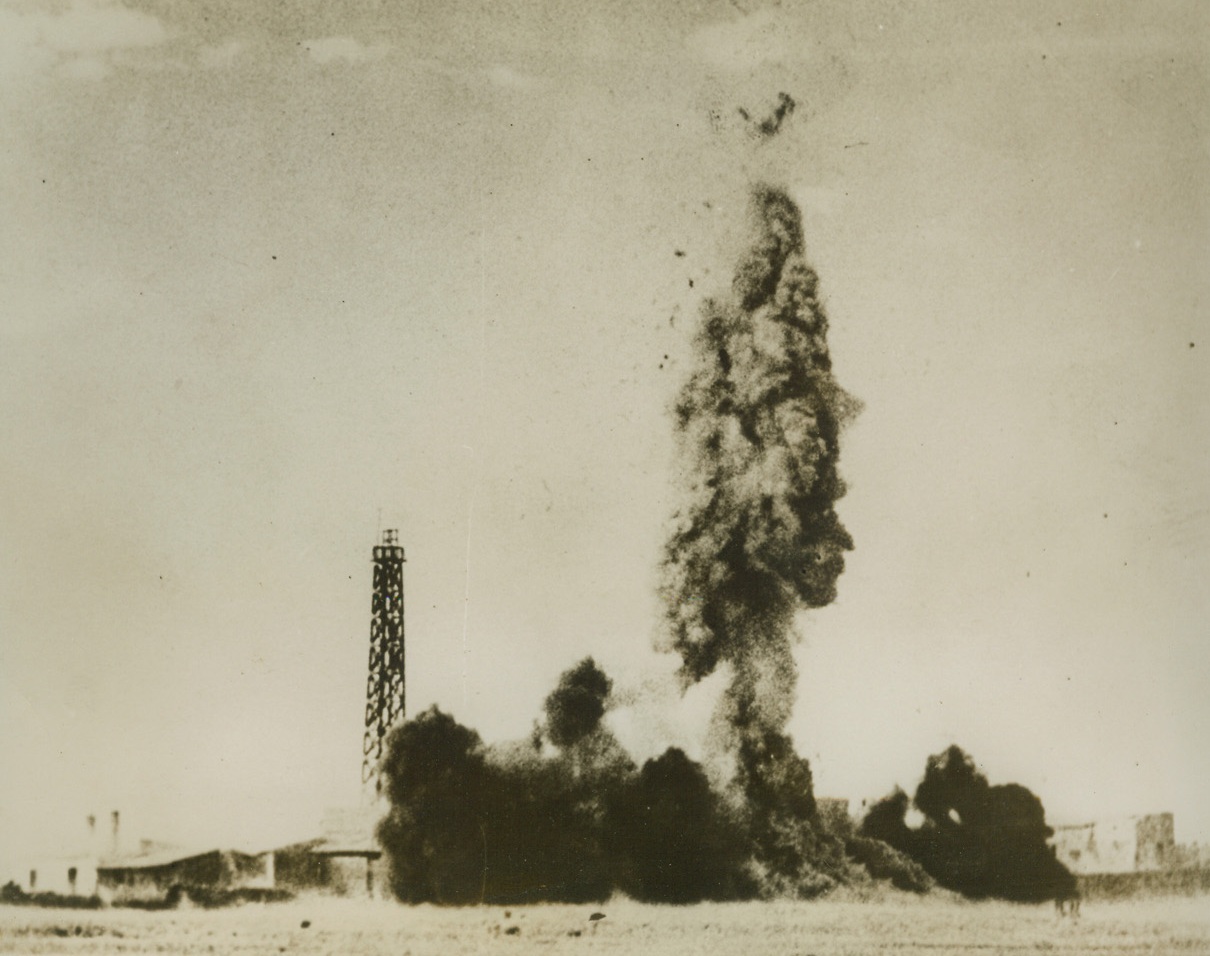
No Title, 8/26/1940 Caption is torn and illegible.

German Picture of Portsmouth, 8/27/1940 BERLIN – Puffs of smoke mushrooming up (left center) as German planes bombarded the Admiralty Wharves at Portsmouth. This airview was sent from Germany by radio on Aug. 27th.Credit Line (Acme);
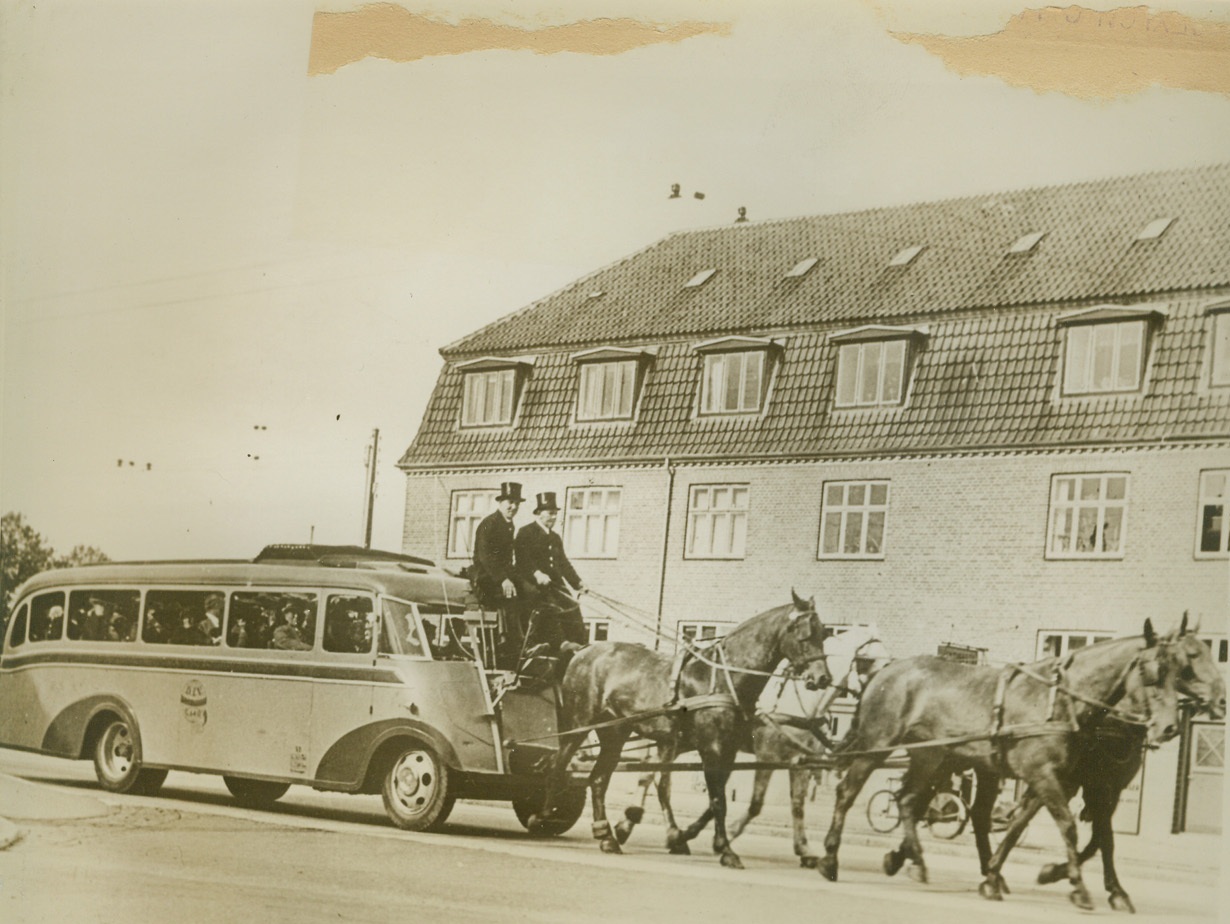
Dobbins Draws the Danes, 8/30/1940 COPENHAGEN -- To retain its business in the face of gasoline shortage, a Copenhagen bus company had coaches re-equipped in this manner to transport the population of the German-occupied Danish capital by horse-on-the-hoof-power, with top-hatted drivers at the reins. Credit: (ACME);

Business as Usual at Port of London, 8/31/1940 London—Denying German reports that the Port of London was put out of operation by smashing Nazi air raids, the British censor released the picture, showing ships in dock at the port, and a caption reading “Port of London a hive of industry.” Credit: ACME.;
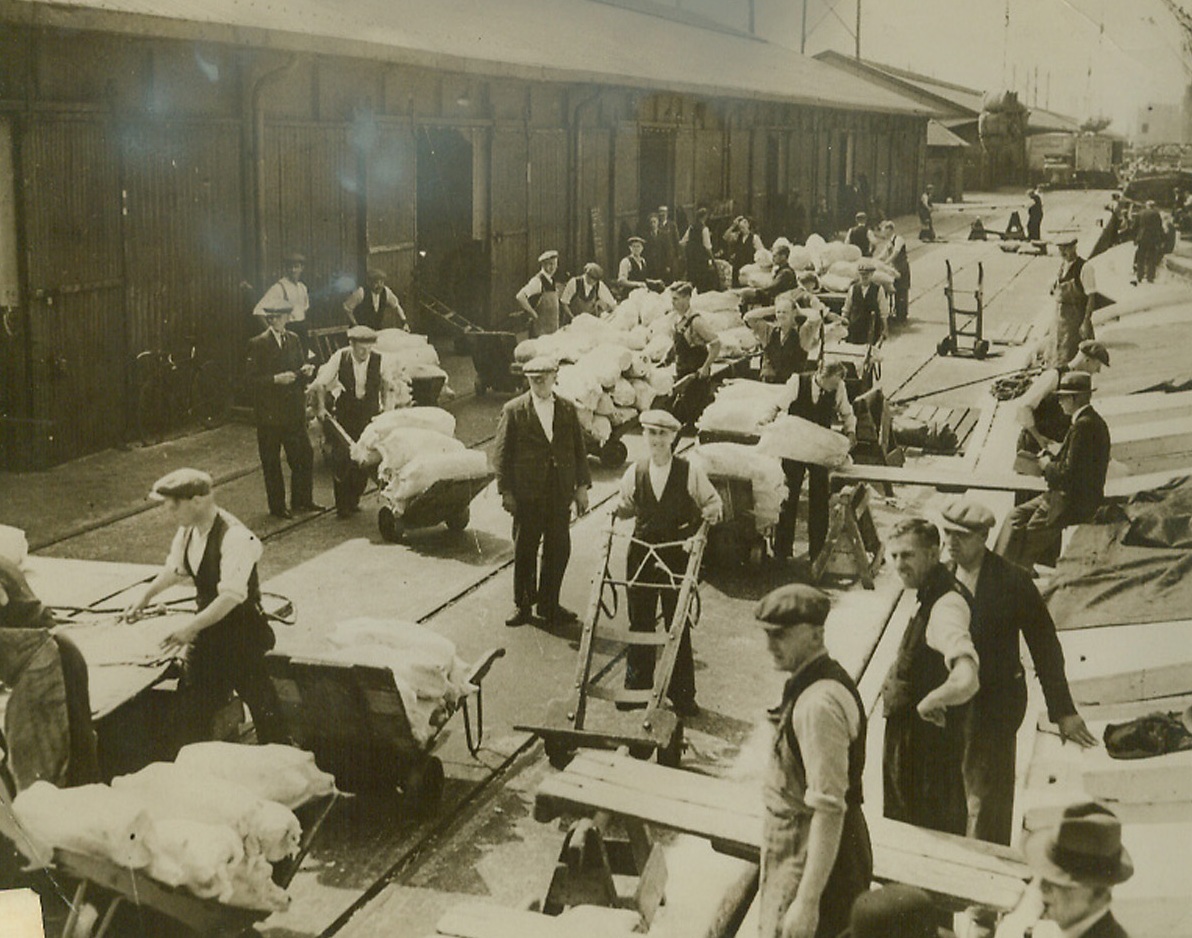
Business as Usual at Port of London, 8/31/1940 London—Denying German reports that the Port of London was put out of operation by smashing Nazi air raids, the British censor released this picture, showing meat arriving from New Zealand at the port, and a caption reading “Port of London a Hive of Industry.” Credit: ACME.;
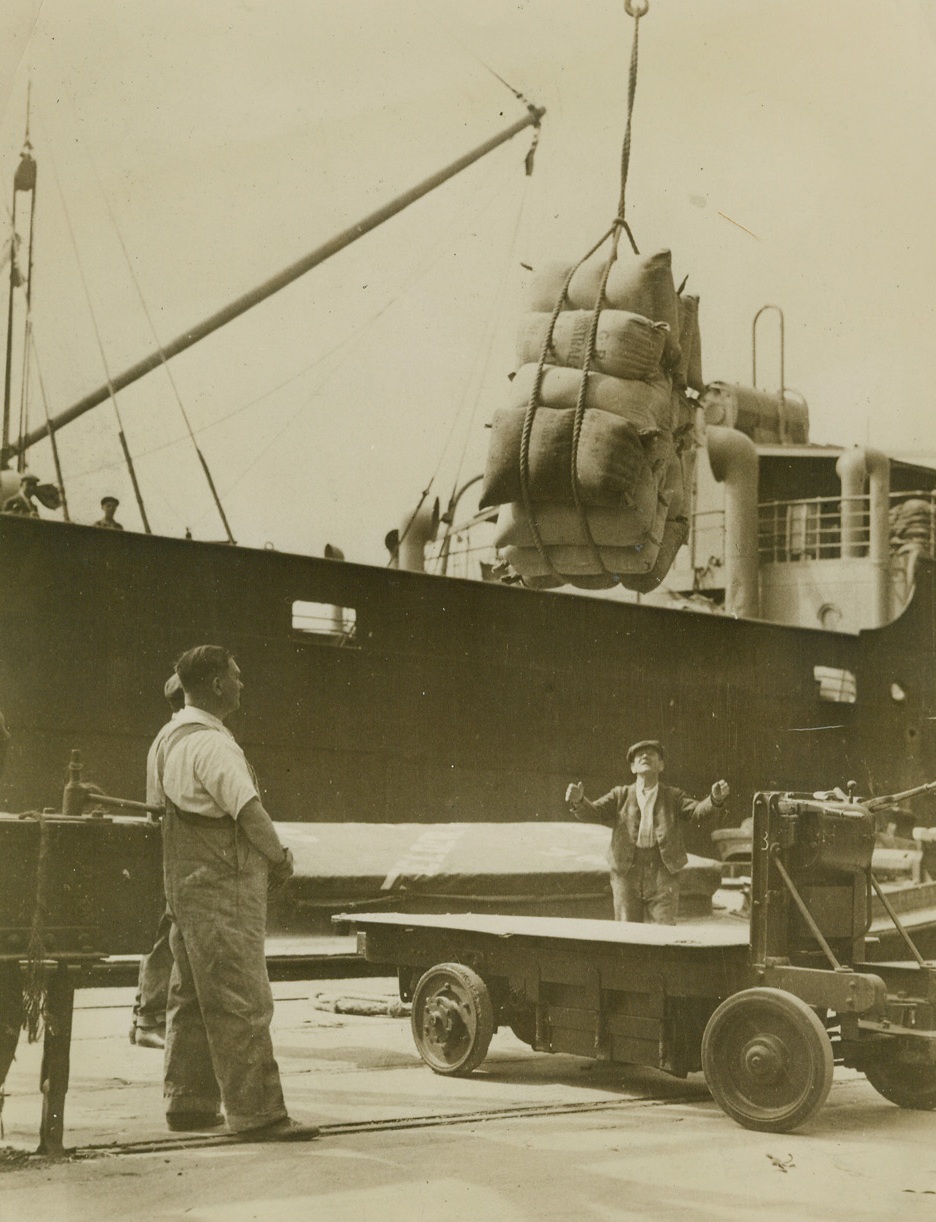
Business As Usual At Port of London, 8/31/1940 London - Denying German reports that the Port of London was put out of operation by smashing Nazi air raids, the British censor released this picture, showing flour from Australia arriving at the Port, and a caption reading “Port of London a Hive of Industry.” Credit: ACME;
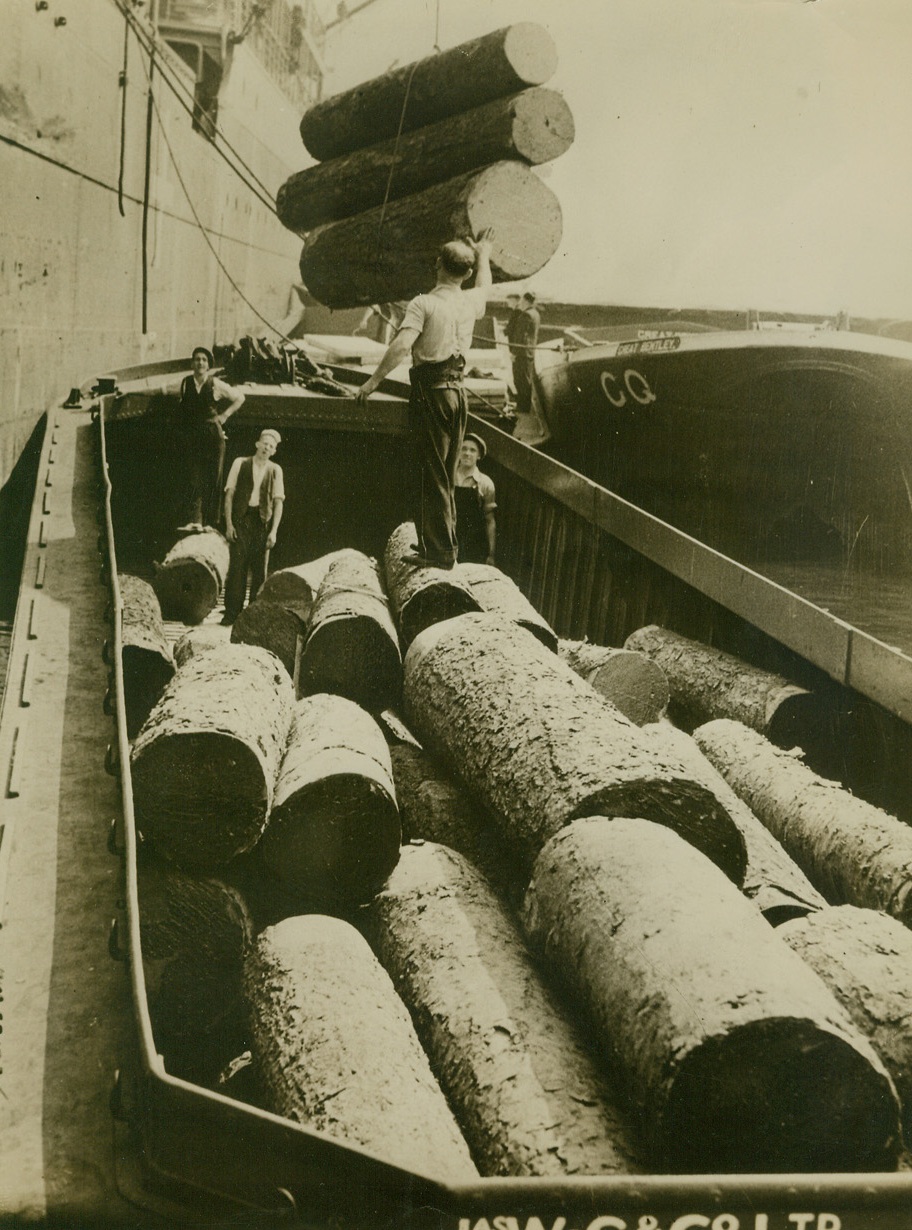
Business As Usual At Port of London, 8/31/1940 London - Denying German reports that the Port of London was put out of operation by smashing Nazi air raids, the British censor released this picture, showing timber from Canada arriving at the Port, and a caption reading “Port of London a Hive of Industry.” Credit: ACME;
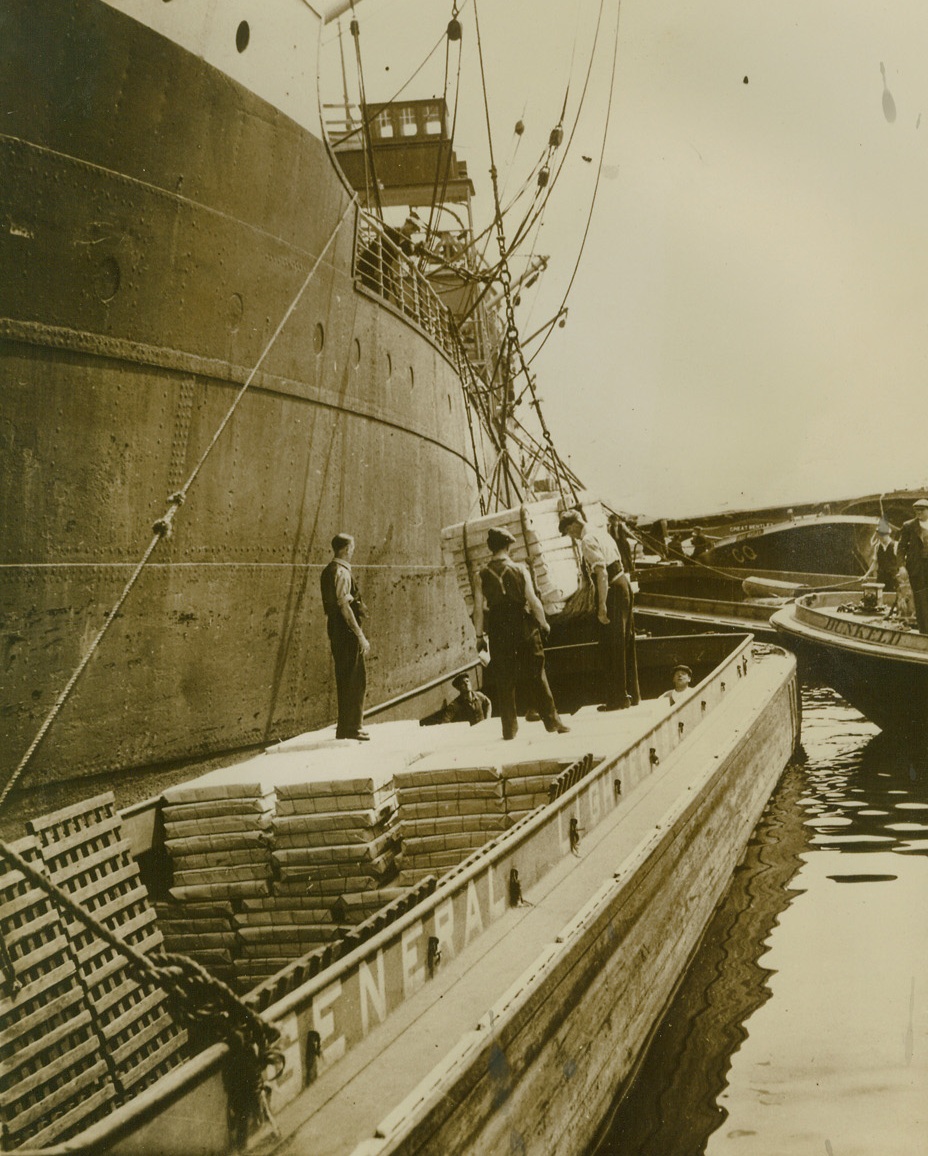
BUSINESS AS USUAL AT THE PORT OF LONDON, 8/31/1940 LONDON – Denying German reports that the port of London was put out of operation by smashing Nazi air raids, the British censor released this picture, showing activity “going on as usual” at the port as paper is being loaded for New Zealand.Credit: Acme;





 Trash & Recycling
Trash & Recycling
 Online Payments
Online Payments
 City Documents
City Documents
 Parks
Parks
 Traffic Court
Traffic Court
 CITY PARKS
CITY PARKS
 Outdoor Recreation
Outdoor Recreation
 Volunteer
Volunteer
 Home
Home TRANSLATE
TRANSLATE
